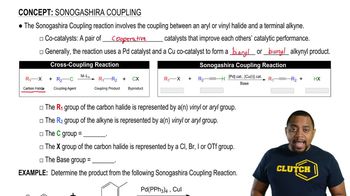Draw a diagram like the one shown in Figure 14.12 to predict
b. the relative intensities of the peaks in a quintet.
<IMAGE>
 Verified step by step guidance
Verified step by step guidance Verified video answer for a similar problem:
Verified video answer for a similar problem:



 8:02m
8:02mMaster Splitting with J-Values:Complex Tree Diagram with a bite sized video explanation from Johnny
Start learning